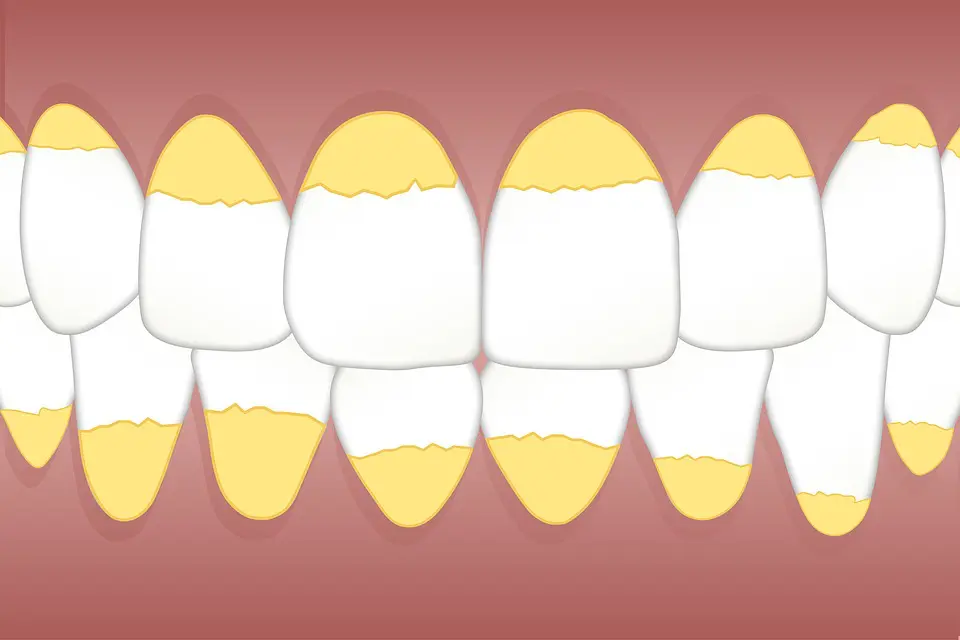Daffodils
Bumblebees
Lemons
Baby Chickens
These are a few of my favorite things. And these things happen to be yellow. Yellow is a bright, happy, fun-filled color. . . unless it is on your teeth. Daffodils make us think of spring and joy, but we don’t feel those kinds of feelings when we see them in the mirror.
Yellow teeth can be perfectly healthy, but we generally feel more confident with white teeth. So, what causes yellow teeth and how can we prevent it?

(Pixabay / kreatikar)
Once a man went to a doctor with the complaint of a sore arm. The doctor asked him to move the arm in certain ways, probed around, and asked more questions. Finally, it became clear that it only hurt when the man held his arm at a certain angle.
“So, what should I do, doctor?” The man asked.
“Well, the solution is pretty simple,” was the reply.
“Really?”
“Yep, see how it hurts when you hold it that way?”
“Yes.”
“Well,” the doctor began, “don’t hold it that way.”
Yeah, that doctor probably won’t get an amazing Google review.
Outside Causes
External forces are the most common cause of yellowish stains on the teeth. Tobacco, coffee, and tea are common perpetrators, but they aren’t alone in their coloring crimes. Any dark-colored foods can have a staining effect: wine, soda, chocolate, soy sauce, curries, etc. There are also some fruits and vegetables, such as grapes, blueberries, cherries, and beets, that can cause potential stains.
It isn’t just the colors we have to worry about. Food and beverages that are high in acid can also cause problems. The acid wears down the enamel, leaving the rougher surfaces of teeth to absorb the staining colors.
It would be easy enough to suggest that you simply not eat or drink anything from the list of staining foods. If you just ate white bread, rice, and apples, then your teeth would stay perfectly white. The rest of you, however, might have some struggles. Eating a wide variety of colors is good for the body and it can be good for the teeth. Just follow up any acidic or colorful foods with plenty of water and, if possible, mouthwash or a toothbrush.
Cutting down on the most damaging substances—tea, wine, and coffee—would be helpful. They have the added punch of being both dark in color and acidic, so it is a bit of a double whammy. Still, being mindful of that effect and taking the time to rinse well after drinking can go a long way in preventing the staining damage.
Inside Causes
Some yellowing can come from the inside. Certain antibiotics, if taken by children under 8 years old, can cause yellow teeth in development. Those same antibiotics, if taken by a woman in late pregnancy or during breastfeeding, can cause discoloration in baby teeth. Prescription mouthwashes that contain chlorhexidine can cause brown discolorations in teeth. But wait, there’s more! The acne medication minocycline can also stain teeth, as well as chemotherapy and even some antihistamines and blood pressure medications. These things probably don’t matter since the experiences that lead us to take them might help us remember that there are worse problems than yellow teeth. Still, it is good to check with doctors when starting a new medication so you can be prepared for any dental effects.
So, Now What?
Knowledge is power, but we still have to deal with yellow teeth. So, how can we keep our teeth looking more like pearls than lemons? The advice is nothing new, but it is better than not eating anything with color. The basics are the best thing you can do to maintain the color you want. Brush, floss, and rinse twice a day. This cleans and strengthens the teeth as well as whitens them.
You should also bear in mind that you have access to dentists, who are far more helpful than the aforementioned misguided doctor. They are here to answer you and help. Sometimes, even when you have done all the “right” things, you may still need some help brightening up your smile. We are here to assist you with all your cosmetic dentistry needs in Weber County. Together, we can keep those teeth healthy, strong, and gleaming.
